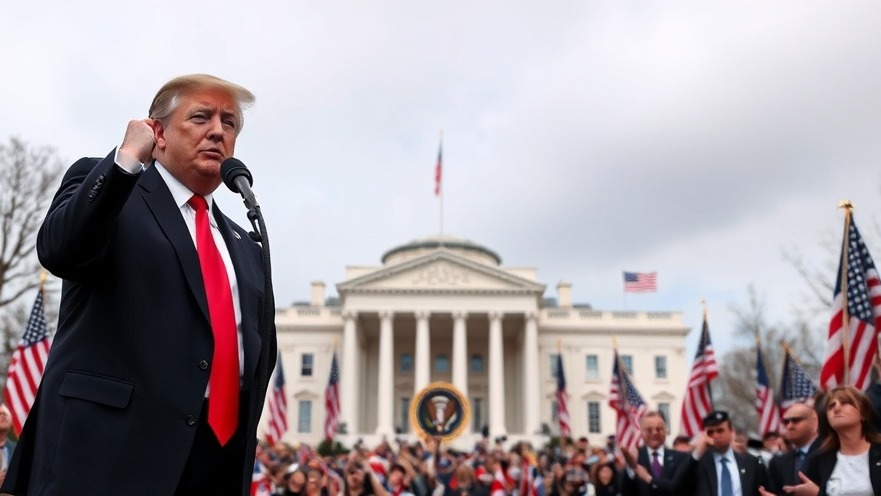
Evaluating Trump's Job Performance Amidst Political Polarization
As President Donald Trump embarks on his second term, a fluctuating sea of opinions surrounding his performance unfolds. Recent polls reflect a preliminary approval rating of 47%, a significant contrast to his historically low entry figures from 2021. However, the reality of his presidency is shadowed by stark partisan divides. While 84% of Republicans express approval of his performance, only 10% of Democrats offer similar support, reflecting a persistent polarization that characterizes modern American politics.
A Breakdown of Approval Ratings Among Voters
Trump's approval ratings are not uniform, revealing varied perspectives among demographic groups. For instance, men, white adults, and older populations tend to express more positive sentiments toward his leadership, with percentages hovering around 52% to 55%. Conversely, approval dwindles among women, Black, and younger voters—a stark reminder of the complexities in audience perceptions. This divide begs the question: what contributes to such a vast chasm in approval, and how does it impact Trump’s agenda?
The Public's Expectations: Hopes vs. Reality
The anticipations for Trump's second term are mixed; while many Americans perceive that Trump has clear objectives for the country, skepticism remains regarding the feasibility of achieving these goals. According to a recent Pew Research survey, 73% of the public believes in the clarity of Trump's goals, yet opinions diverge sharply regarding their potential success. A narrow majority of Republicans believe he will accomplish most of his agenda, while a similar portion of Democrats predicts his efforts will fall short. This ideological rift raises critical discussions about governance and the role of consensus in policymaking.
Trump's Impact on National Issues: A Closer Look
Trump's early job ratings echo sentiments captured in a Gallup poll, where key issues such as immigration, economy, and foreign affairs are closely tied to his overall approval. Notably, his handling of immigration garnered a 46% approval rating, slightly outpacing other critical areas such as trade and foreign policy. However, a significant 51% of Americans disapprove of his job performance, hinting at the contentious political climate influencing public opinion.
The Broader Political Landscape and its Influence
The ongoing divisions manifest not only in public opinion but also across congressional approval ratings, which have similarly risen following the Republican party's resurgence in legislative power. Many feel that partisan alignment often skews perceptions of effectiveness and leadership quality, demonstrating how affiliation can cloud objective assessments of executive actions.
Future Implications of Current Trends
As Trump settles into his second term, a critical contemplation remains: can he bridge the ongoing divides and create actionable outcomes for his administration? The landscape of American politics continues to evolve, and the next few months will be paramount as Americans observe how Trump navigates challenges, particularly in achieving bipartisan support in a fractured environment.
Conclusion: The Path Ahead for America's Leadership
While Trump's return has garnered considerable attention, the real question looms as to whether his strategies will yield positive results across diverse groups or further entrench divisions. As the political climate shifts, one can only hope that the administration's future endeavors will prioritize unity and collaboration over discord.
 Add Row
Add Row  Add
Add 




Write A Comment